Here you can find information about what is new in HP Carbon version 1.1.33.
For the stones with inclusions, the system now supports the ability to increase in some cases the mass of the solution by specifying that some part of inclusion can be included in the future solution. This can be done by marking an inclusion as multi-part ("Sandwich").
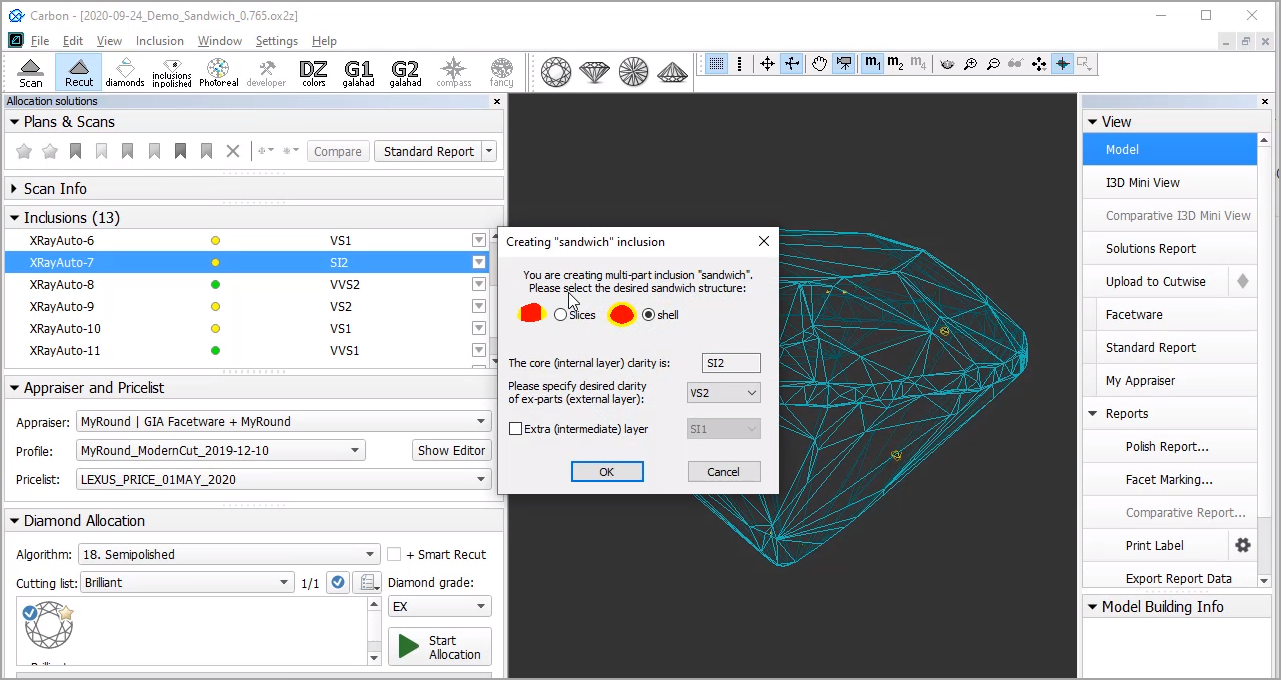
For a future "sandwich" inclusion you can specify:
To make an inclusion "sandwich":
You can find some details in the video below:
Now during scanning using a loaded sample cutting, a facet marking from this sample is automatically transferred to the created 3D model. This provides an effective way of getting the correct facet classification (marking) for your model and creating the appropriate reports .
For example:
| Auto Marking | Marking of Sample and Resulting Marking (identical) |
|
|
Resulting Polish Report (strings for Pav Main Width, Pav Main Length, and Pavilion 2 Main are highlighted with the colors from Facet Marking) | |
|
|
| Resulting I3D Pavilion View | |
|
|
A building of industrial object models (cubes, cuboids, trapezoids, truncated cylinders) is improved.
| Was | Now |
|---|---|
|
|
|
|
|
|
For such models, it is also necessary to apply a facet marking from your sample.
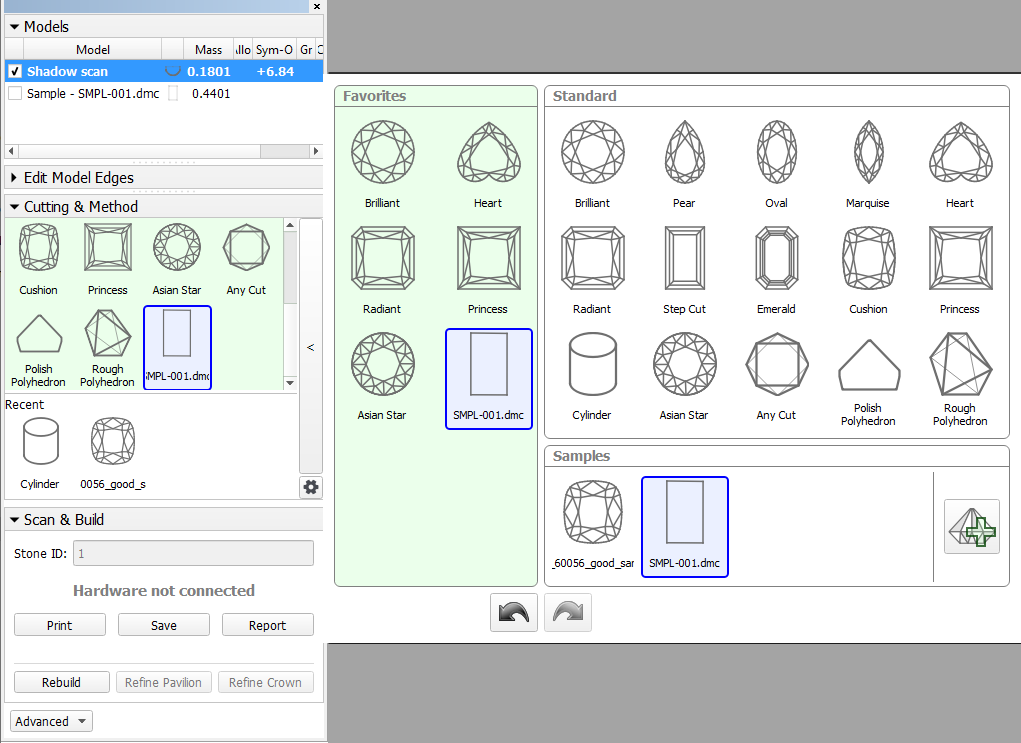
To build a good model for your simple object and automatically apply a facet marking from your sample to it:
 your sample to the list.
your sample to the list.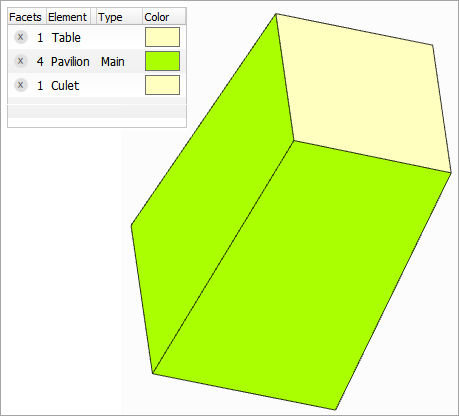
Now you can use the system to quickly obtain important information ( report ) about your trapezoid-like objects:
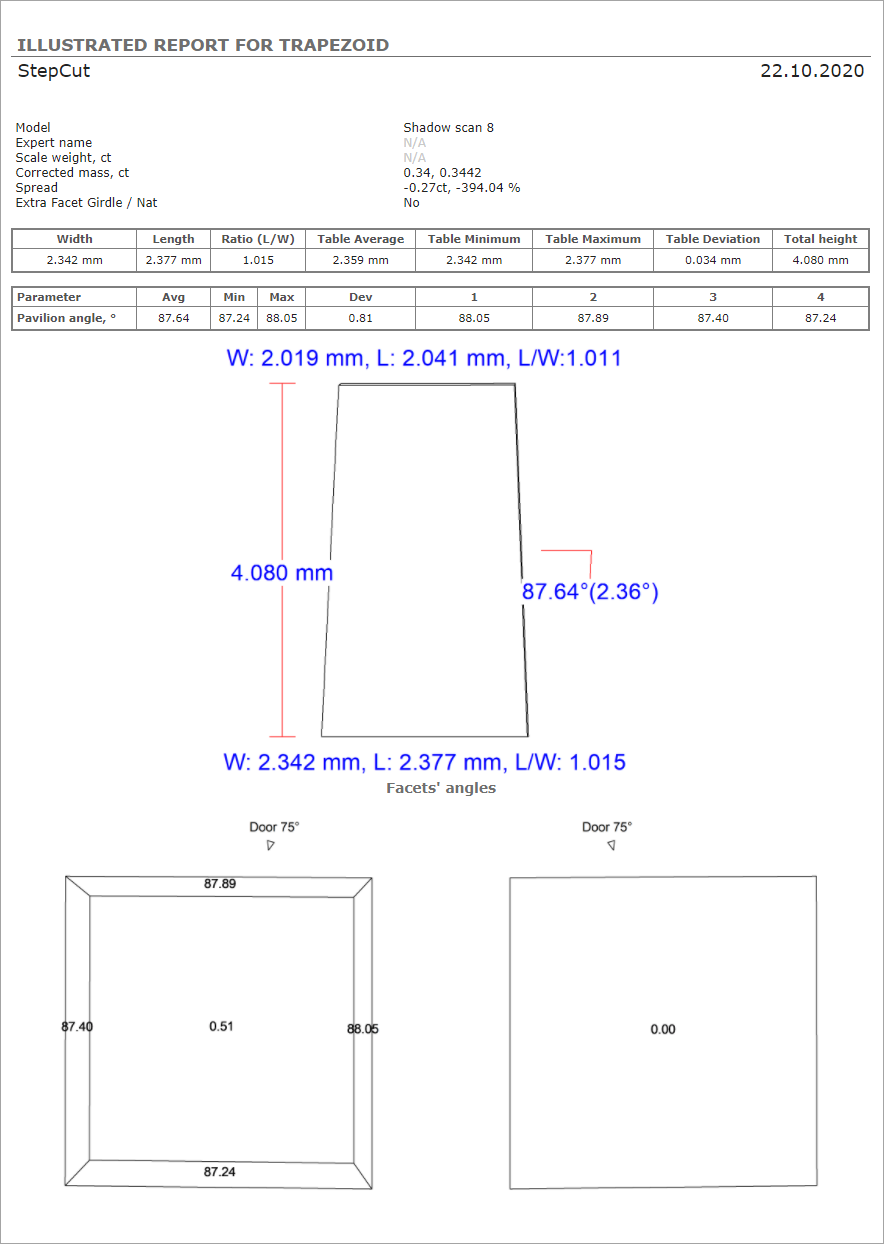
What is improved and added to the system and for what?
| Type of Update | Feature | Description | Why that was not enough? |
|---|---|---|---|
| New | HTML illustrated report for trapezoid Described in this Release Notes in HTML Illustrated for Trapezoid | Gives you all the important parameters and pictures of your trapezoid model. | Before running the report, you need a good model with the appropriate facet marking. |
| Improved | Method of building the trapezoid-like models during the scanning Described in this Release Notes in Industrial Object Models - Build and Facet Marking Improvement | The methods used for building trapezoid-like models are improved: you do not obtain unnecessary extra facets any more, the model is more precise. | Problem 1: you need to think about which method to select. Problem 2: even the good model needs an appropriate facet marking - previously scans did not obtain facet marking automatically. |
| New | When scanning/rebuilding using the sample trapezoid:
Described in this Release Notes in Scanning - Applying Facet Marking from Sample | If during scanning/rebuild you use your own sample trapezoid as cutting, the appropriate method will be detected by the system automatically, and your good facet marking will be automatically transferred from sample to your scan. | This gives you all except the report - which was given is step 1! |
How to work?
With your new scan selected, on the right panel, click Polish Report, go to Open HTML, then select "Illustrated report for trapezoid" and Make Report.

|
The new template for Polish Report is added - HTML Illustrated for Trapezoid.
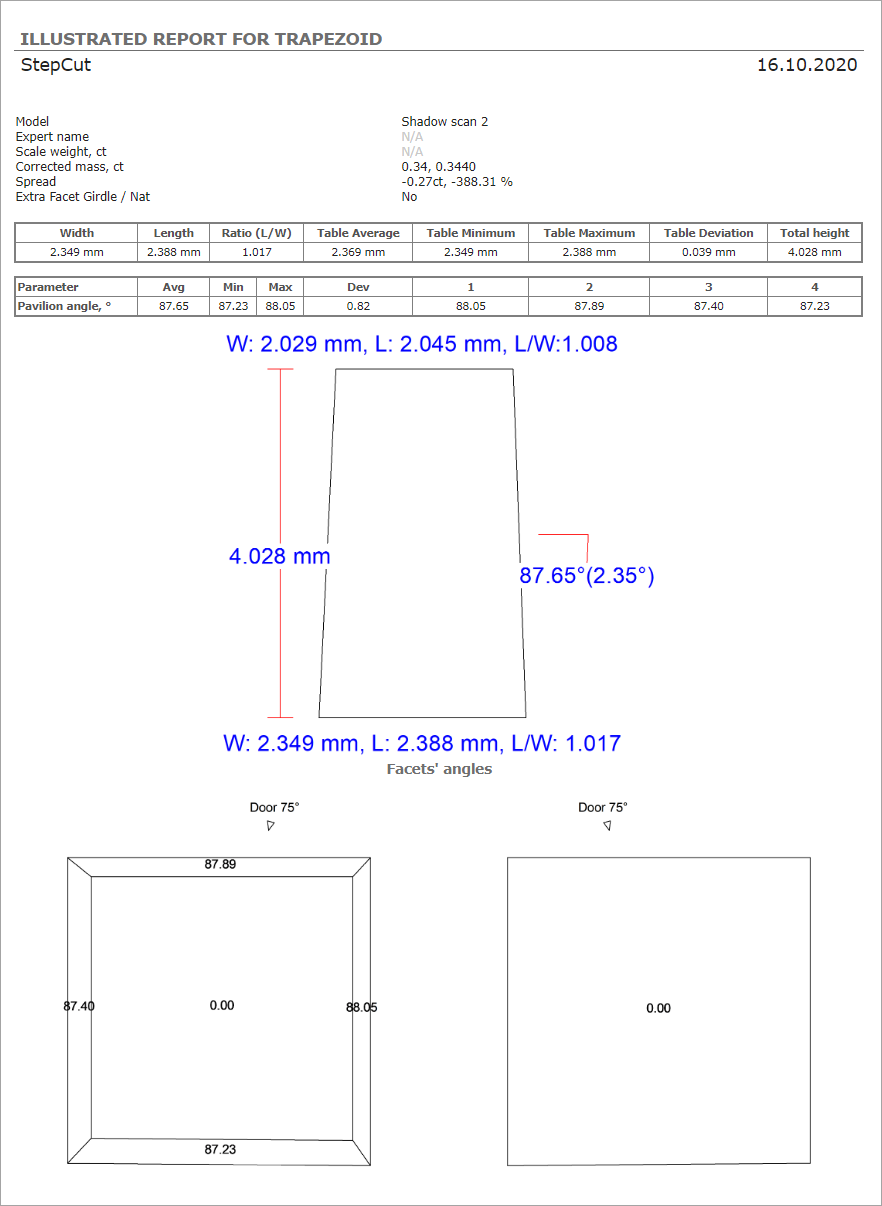
This template is an essential part of the Trapezoid Workflow.
Now in Polish Report, the Cutting Type list includes "Square Cushion".
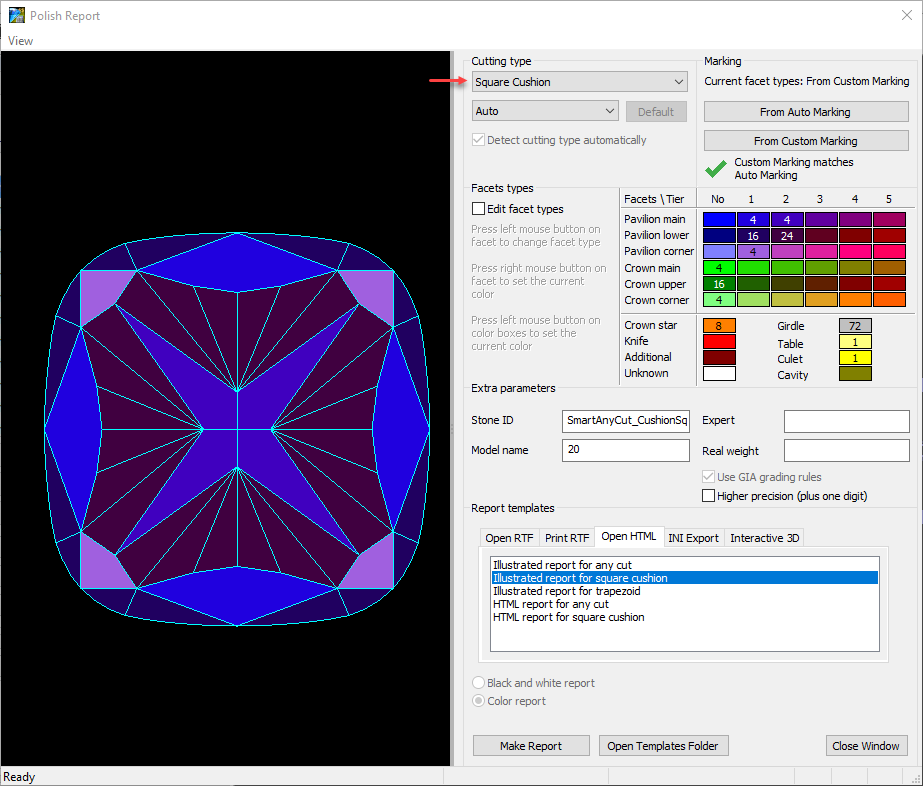
The following report templates are added for this cutting type:
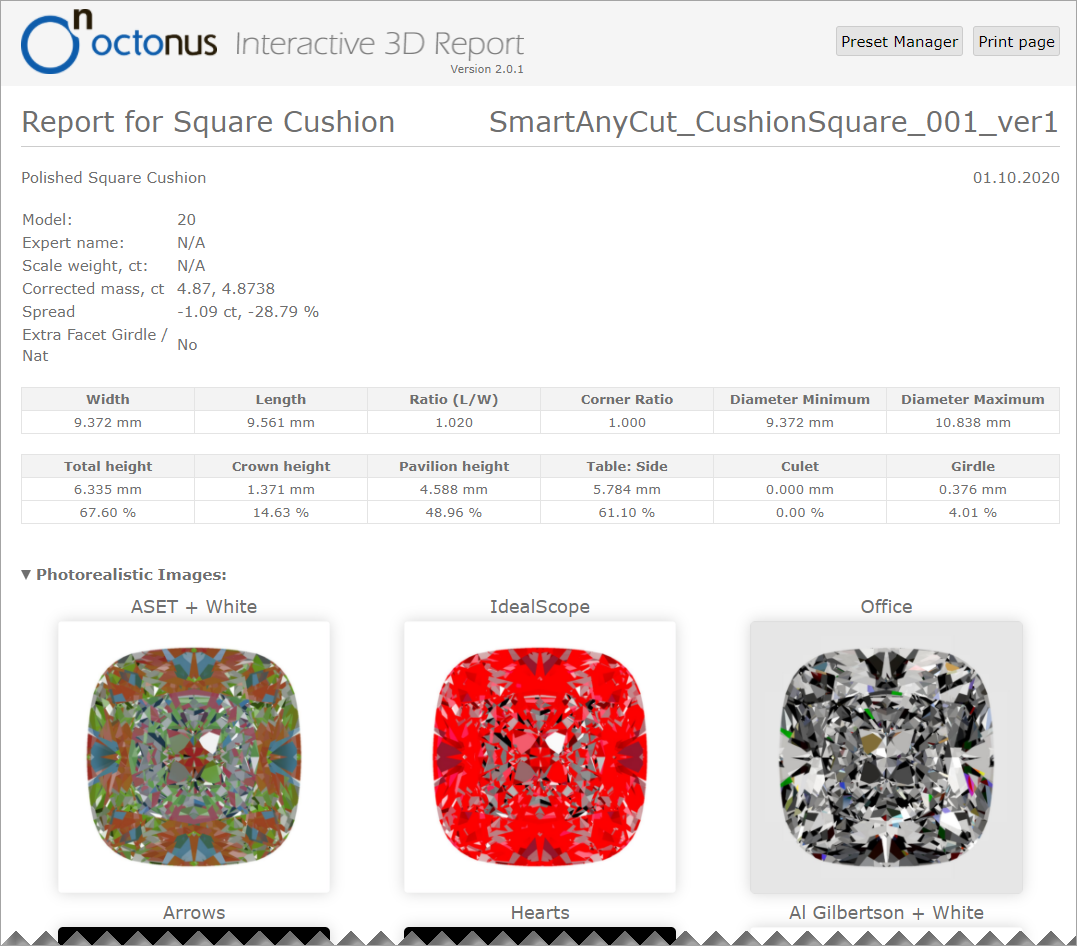
Also, the Standard Report for Square Cushion is updated correspondingly.
For the Comparative I3D Mini View, two new modes are added:
Distance from Reference, µm | Distance from Current, µm |
|---|---|
|
|
|
|
Notes on meaning: | |
|
|
Here is an example:
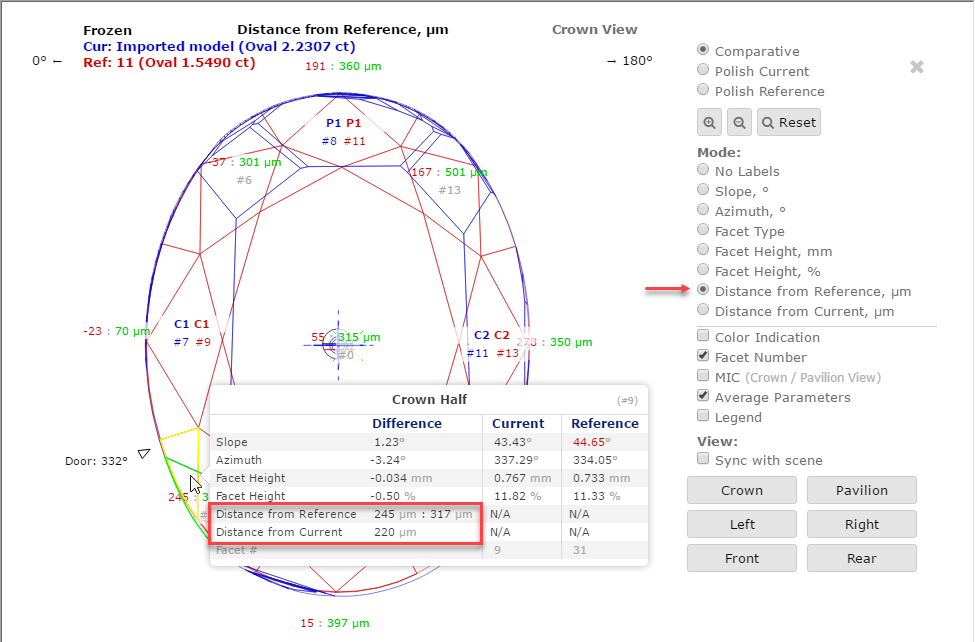
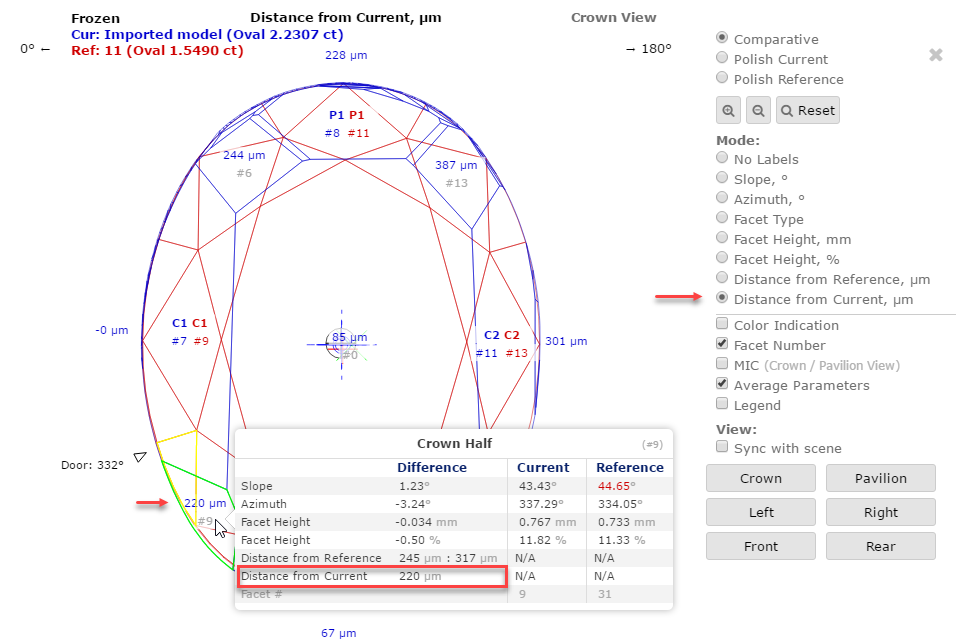
The new parameter is added to the appraisers used by the Smart Recut algorithms.
| This parameter is applicable to the following cuts: AnyCut. |
The parameter is used in the same way as the Square Deviation of the Oval cut. Unlike Square Deviation, the SquareDeviationTolerance (used by Smart Recut only) is set via presets and limits not the value of the parameter, but its deviation from the value of the starting model.
Calculation
The parameter is calculated in the same way as the Square Deviation of the Oval cut.
Usage and Examples
Here is an example of how the parameter affects a girdle shape and mass:
117_SM_10137_Square DeviationTolerance.ox2z
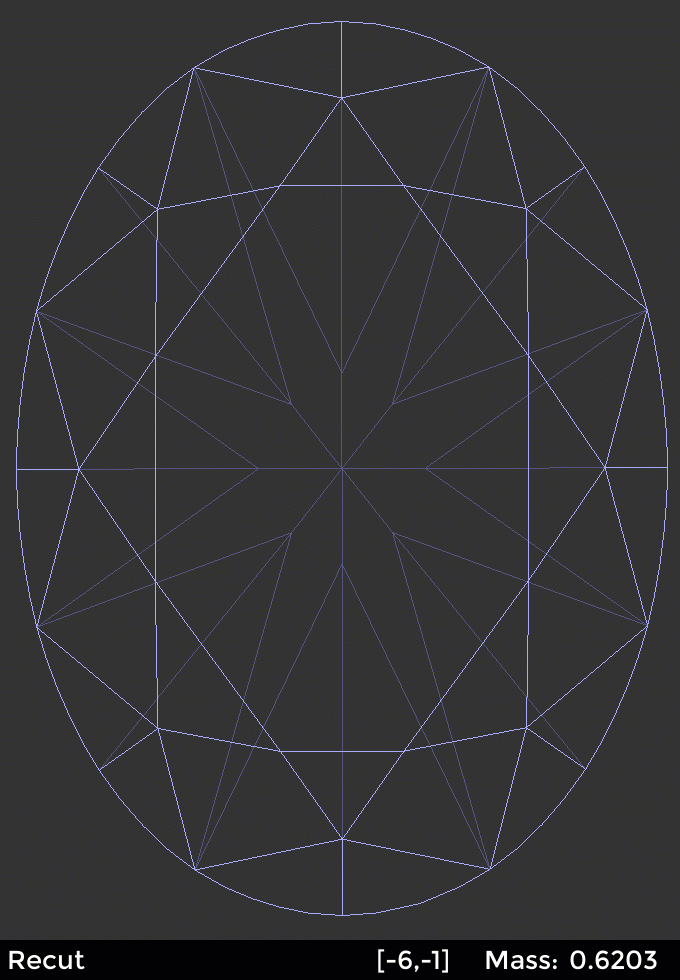
Reporting
| Reported in | Section | Values | Units | Bookmarks | Name in Reports |
|---|---|---|---|---|---|
None | NA | NA | NA | NA | NA |
Visualization in Appraisers
| Value | Units | Bookmark | Tab | Parameter Name | Comment |
|---|---|---|---|---|---|
| Avg (the only value) | None | NA | Cut | SquareDeviationTolerance | Visible only when presets are displayed. |
For the G1 Galahad mode, the new features were added. As this functionality is shared with the Galahad Compass product, see details in the Galahad Compass documentation:
Here is a brief overview of what is new:
Actual Cut and 4 Colors for Steps
Order of Work - Stages and Steps
Actual Cut Model
Protection of Overcut Area ("lock" icon)
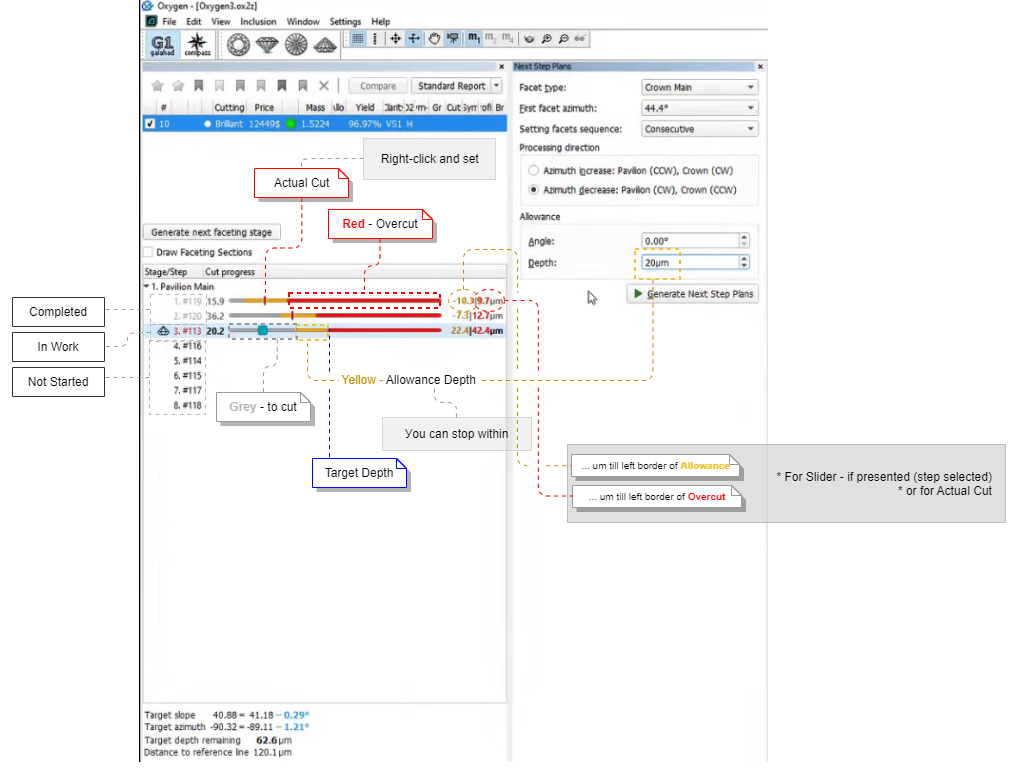
In the Next Step Plans panel, the Allowance section, the Angle parameter is renamed to Slope. The usage of the parameter is temporarily blocked (next step calculation does not consider this parameter) due to technical reasons (planned to be restored in the upcoming releases).
| Was | Now |
|---|---|
|
|
Previously for DZ Color Estimation , the calculation of Table Color was performed after the Pavilion Color for all the solutions - the process could take time but the progress was not anyhow displayed within the system. This caused the cases when the export to Cutwise could have been started before the calculation is finished thus the data uploaded to Cutwise did not contain the Table Color information. Now the Pavilion Color and Table Color are calculated together for each solution and the entire progress is indicated:
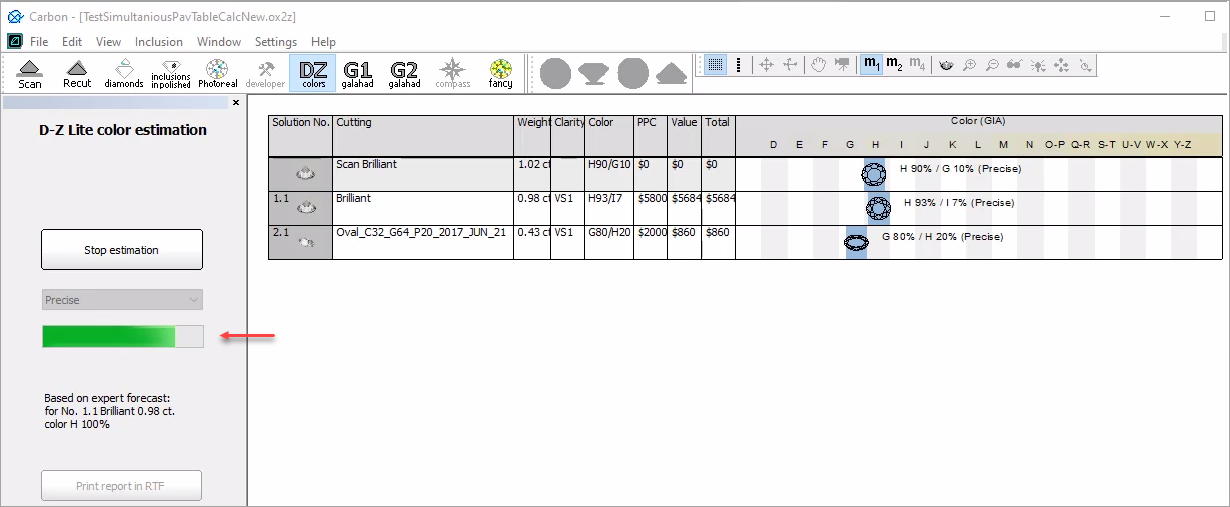
This approach guarantees that during export to Cutwise all the solutions will be exported with information about both Pavilion and Table Colors.
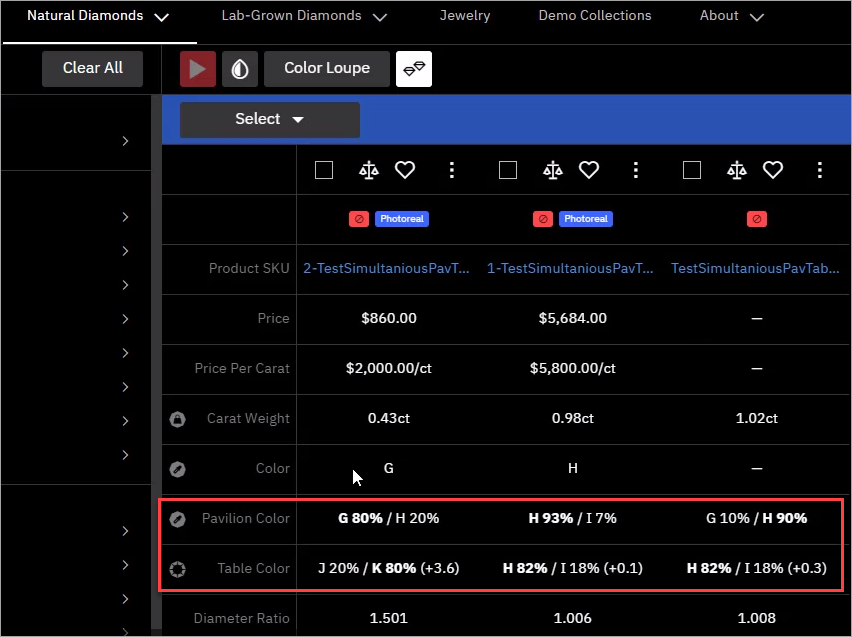
In the Polish RTF Full Report, there are Pavilion and Crown views without indication of invisible edges (PAVILION_VIEW and CROWN_VIEW bookmarks):
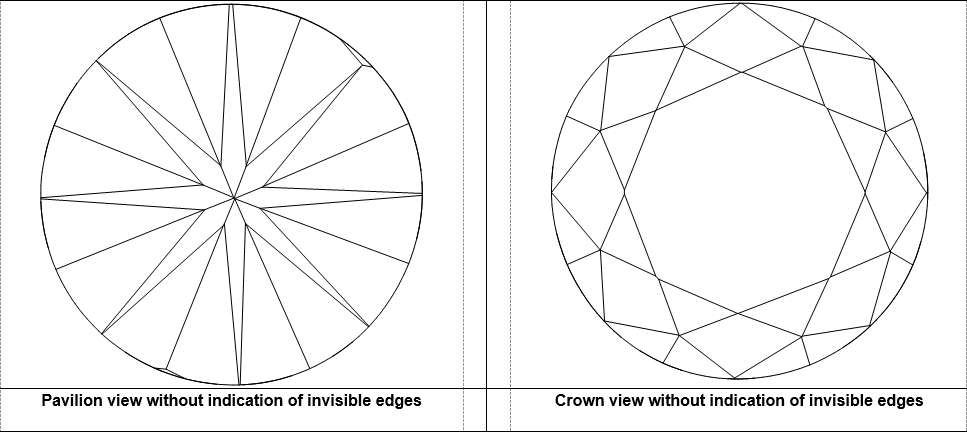
Now you can change the rotation of the model presented on these images. To do this:
Replace bookmarked text as follows:
| Was | Now | Comment |
|---|---|---|
[Width=73;Height=73;] | [Width=74;Height=74;PictureID=DRAW_DIAMOND;PavilionView=1; | X and Y with values are responsible for rotation. |
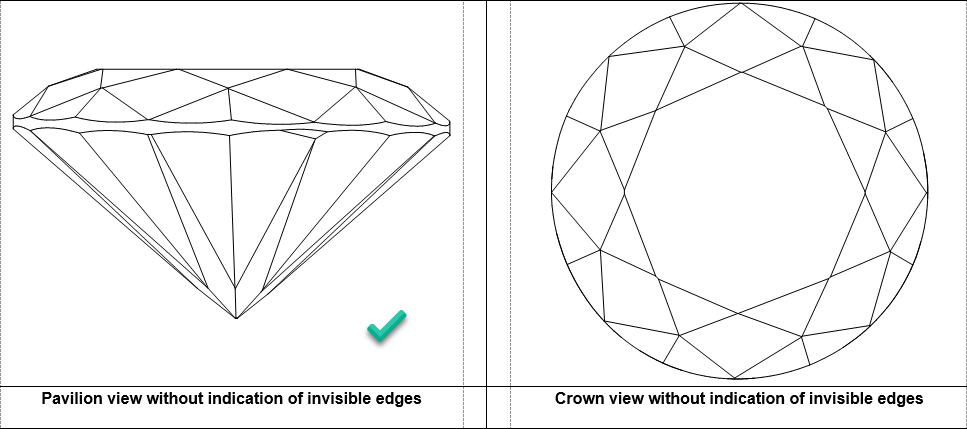
Also, other Polish RTF reports support adding the same images with the rotation you need.
Below is the example showing how the rotated Pavilion view without invisible edges can replace the standard image in the Polish RTF Illustrated report for brilliant:
|
When using Integration with Cutwise, you have two ways of uploading your data to Cutwise:
It is important to remember, that if you use the Upload to Cutwise function in HP Carbon, you should not use the manual approach for the same data, because after Upload to Cutwise is used if you try to manually upload the same models/reports, you will not see the new data in Cutwise - the one previously uploaded from the system with the Upload to Cutwise function will stay unchanged.
HP Carbon now has the new logo:
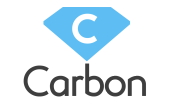
And icons: 

The following fixes for the known problems and improvements are implemented:
For Comparative I3D Mini View, synchronization with the Scene did not work in some cases - now this is fixed.
Models in Comparative Reports are aligned by the Current model now and in particular in Comparative I3D Mini View. Due to the modification of models' alignment calculation results in Comparative Reports is changed. |
Bug with the crash of the system during DZ Color calculation is fixed.
A rare bug when some system settings were reset to default values is fixed.
Autosave did not work - now this is fixed.
During the import of scanned ASCII, an error occurred (displayed on the picture below) caused by too strict limitations. Now limitations are eased to avoid error and allow using all scanned ASCII models.

The Rough recognition algorithm is improved.
|
A system crash on running Smart Recut with AnyCut composite appraiser for some specific cuttings is fixed.
Fixed bug with wrong DZ Color Estimation of Main Scan if a project had several scanned or imported models. This issue was not affecting DZ estimation of solutions.
The wrong model rebuild for the Oval cutting is fixed.
In the Illustrated report for Cushion, on the image, some facet angles were not displayed - now this is fixed, all angles are presented.
Label printing is improved to work correctly with different page sizes.
The problem leading to an episodic crash of the Smart Normalize algorithm is solved.
The problem with Comparative I3D Mini View freezing in some cases is solved.
The Facet Marking dialog:
When pointing a facet, "Tier" information was not displayed in the facet info block for "Tier 1" - now this is fixed.
|
For the "Cylinder" cutting, the dialog did not open (the error was displayed instead) - now this is fixed.